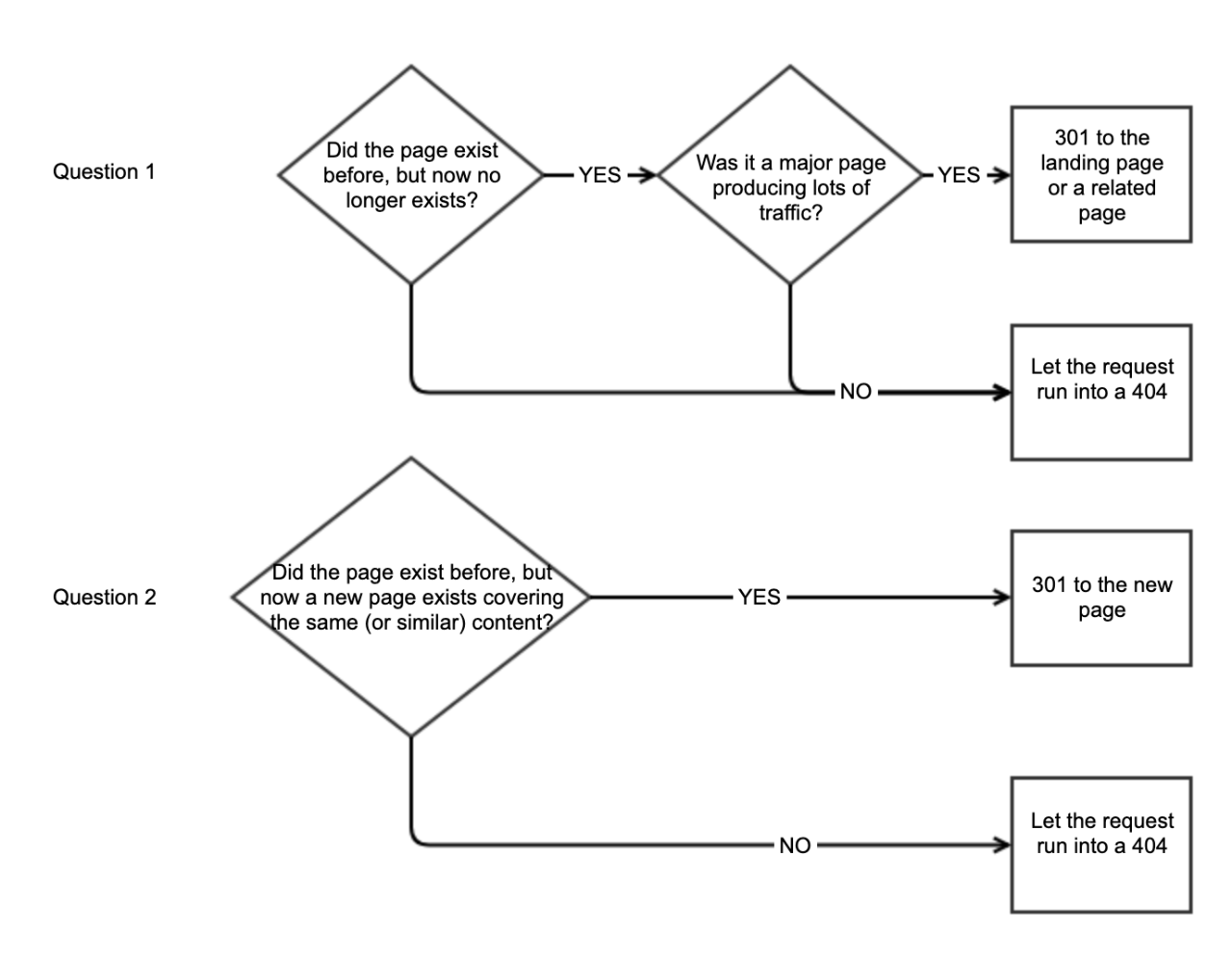Migrating web experiences: 301 or 404?

Making a decision on whether or not to redirect pages is a fairly common topic when working on websites - especially when moving from one CMS to another. If the content structure changes, it is really important to redirect content to ensure that it is still callable or linking to a new and updated content page, which is related to the old link. In situations such as this, one can make use of 301 and 302 redirects, and in some cases, a 404 not found.
How to use redirects
Each redirect serves a particular function. A 301 redirect is a permanent redirect, whereas a 302 is a temporary redirect. They are each treated differently by search engines in relation to ranking algorithms. In addition to this, there is also the 404 return code, which is the classic ‘page not found’. It’s worth bearing in mind that redirects are also cacheable. Therefore, if you change any behavior, you must ensure that you are managing caching layers like a CDN properly.
Leveraging SEO using redirects
Choosing the right redirect for each case can be difficult. Indeed, throughout the web, you’ll find many SEO experts having different, and very often contradictory, views. This is partly because search engine algorithms are not published, so one must do a lot of interpretations to deduce which redirect will best enhance SEO. It’s often a case of trial and error.
However, trial and error is not a failsafe approach, because in many cases, the actual listings are not measured properly. To mitigate this, you can use Google tools to check your SEO ranking. Within this, it is possible to see how and when each redirect is coming out positively or negatively for you in the ranking. This can help inform your decision going forward. Applying common sense here is probably the best option.
Which redirect to choose
This depends on the specific scenario. For example, if you are moving to a new content structure, you must ask yourself the following questions:

In most cases, by asking these two simple questions, one can make a proper decision on defining a redirect.
Efficient status codes
Another response code which can be leveraged is the 410 status: gone. If the content is really gone, the 410 status code helps to get the entries out of a search index much faster than a 404. Therefore it can be beneficial when switching between content structures.
For example, when going live with a new web technology stack such as Adobe Experience Manager, a 410 status code will make the search engines drop the entries quicker which should no longer be listed. This will point any users who are searching for your content to the new site much more efficiently. An alternative to this is also making use of no-index response headers. These must be treated very carefully as they heavily impact the SEO listings!
References:
http://www.google.com/support/forum/p/Webmasters/thread?tid=1bc5206b5e0fac47\\&hl=en#all
http://blog.seitwert.de/301-404-co-die-wichtigsten-statusmeldungen-im-uberblick/
https://www.linkedin.com/pulse/301-vs-404-410-which-one-choose-alan-k-necht/
https://www.seo-suedwest.de/1976-google-301-redirect-soft-404.html